In a machining workshop, the drilling process for a batch of critical components was plagued by frequent tool wear, aluminum chip clogging, and tool jamming, leading to a significant drop in production efficiency and a sharp rise in production costs. How could this dilemma be resolved?
一、Alarm Triggered – A Problem Unfolds
The customer reported frequent aluminum chip clogging and tool jamming during machining with special tools, which severely reduced production efficiency and compromised product quality.Machining Parameters: Spindle Speed: 1,300–2,100 rpm; Feed Rate: 600–1,000 mm/min.
1.Multiple Factors Driving Complex Machining Conditions
①Excessive Run-out: When tools were fastened to the holder with screws, the run-out exceeded the normal tolerance (0.02–0.05 mm). This compromised machining accuracy, accelerated tool wear, and became a potential cause of aluminum chip clogging and tool jamming.
②Large Stock Allowance: Oversized blanks increased cutting loads and raised the risk of tool clogging and jamming.
③Machine Variations: Differences in accuracy and stability between old and new machines led to inconsistent tool performance, reducing adaptability and adding uncertainty to the machining process.
④Insufficient Coolant Pressure: The required coolant pressure was 30 bar for the special machine, but actual supply was only 18 bar. The inadequate pressure failed to cool the tool and evacuate chips effectively, causing overheating, chip adhesion, and eventually aluminum chip clogging and tool jamming.
二、Machining Condition Before Improvement
1.Before improvement, severe chip control issues occurred.
2.Excessive chip accumulation clogged the tool, causing tool jamming and disrupting machining continuity.
3.After machining, operators had to manually remove chips, increasing labor costs, reducing efficiency, and compromising product consistency.
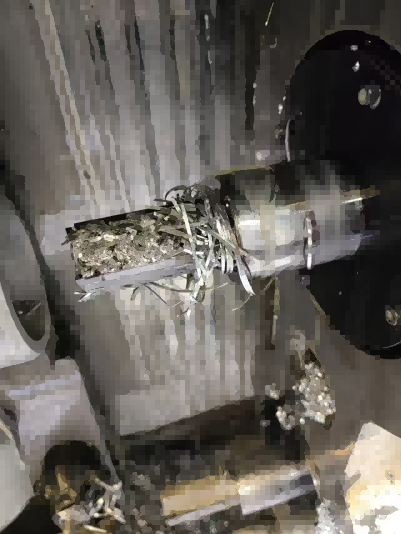
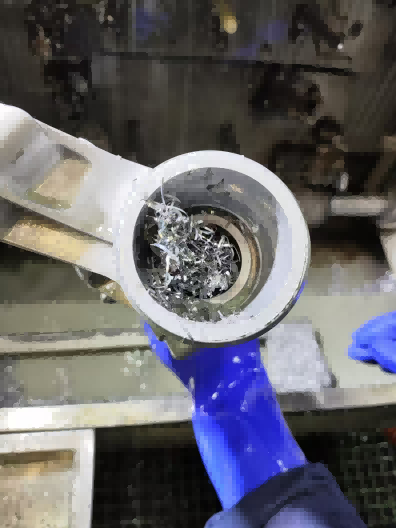
三、Improvement Actions Initiated
1.External Measures: Assigned on-site engineers immediately to investigate and provide real-time feedback.
2.Internal Actions: A dedicated task force was formed to quickly analyze influencing factors and identify root causes.
3.Technical Solution:Using Nagoya laser machine, we re-optimized the tool edge geometry.
4.Result: Trial cutting verification was completed, which effectively eliminated the continuous chip problem and finally resolved the customer’s long-standing challenge.
四、Results After Improvement
1.Significant Improvement in Chip Breaking: After optimizing the tool edge geometry, chips now break off smoothly and evacuate during machining without clogging. Photos of the improved effect show small, fragmented chips, which prevent aluminum buildup and ensure stable, smooth machining.
2.Customer Requirements Fully Met: After 2–3 months of on-site follow-up and feedback, the improved tool fully met the customer’s tool life requirements. The customer expressed strong recognition of its performance, laying a solid foundation for future cooperation.
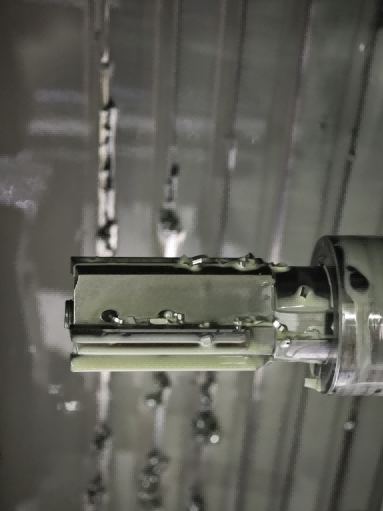
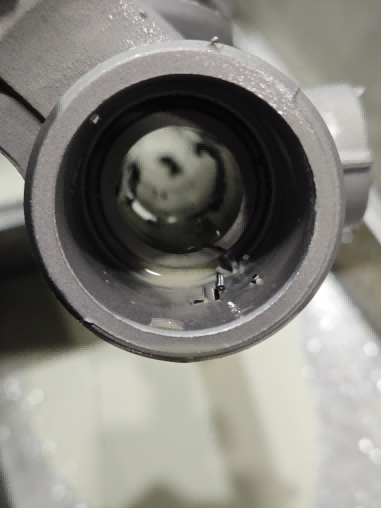
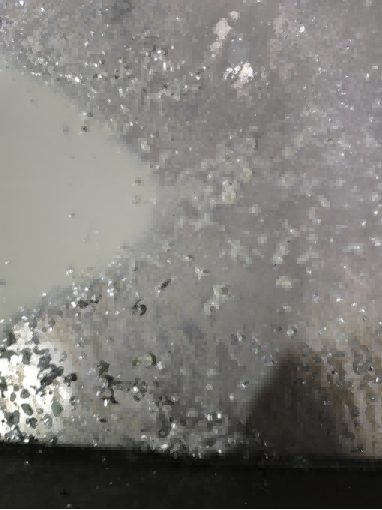
This case highlights the complexity of tool machining problems arising from multiple factors and the effectiveness of targeted improvements. When facing similar challenges, thorough root-cause analysis is essential to develop practical solutions. Moreover, continuous exploration and testing by the technical team are key to problem-solving. Optimizing tool structure can significantly improve performance and meet production demands.
We deliver proven, cost-effective machining solutions with high-precision, high-efficiency equipment. From general-purpose to special machines, and from standard to complex tools, every stage—from design to manufacturing—is rigorously controlled by our professional team, ensuring high-quality, value-driven tooling solutions. Choose us—eliminate tool-fit concerns and unlock a new era of efficient machining!


